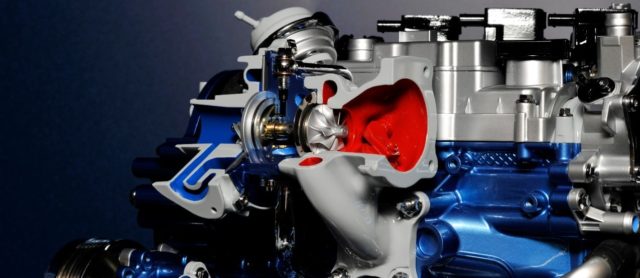by Dean Law, Law’s Automotive
Portage la Prairie, Man.
Gasoline Direct Injection (GDI) engines are a growing portion of the vehicles on the road.
But there are a lot of common complaints of poor performance or low fuel pressure, and a lot of noise coming from the engine.

Most often, though, we are seeing deposits in the intakes on these engines. This leads to starting problems, hesitation problems, misfire problems, or engine rich (or even lean) codes.
Computers are smart, of course, but they’re also dumb, because they can only work from whatever information is input into them. The engineers never designed for the amount of buildup on the back side of the valve. Because the injectors are directly inside the cylinder instead of in the intake, it’s not cleaning things down. So that’s where we’re getting a lot of problems – just like drive-by-wire throttle bodies.
When they first came out, they started setting MAP sensor codes like crazy, but that’s because the throttle plate was too open. It was adjusting, but at least the throttle plates can adjust by a desired idle because it needs a certain RPM.
So you’d be looking at your PID list. You’d be seeing a desired idle come up and you would be looking at your actuation and it’d be 16 or 20%, which is way too much. And they’ll be starting to throw correlation issues with that.
But the valve problems that we have with the GDI systems, they’re not the same, because they’re not electronically controlled (yet!).
There are people that are coming up with valves that are actually going to be controlled by solenoids. This is going to be pretty cool, but then you have to get an O2 sensor on each of the exhaust ports, and then you can actually richen or lean out whatever cylinder is running rich or lean, instead of the whole bank.
We’re not there yet, though I think that the European market is getting pretty close.
On the GDI front, it’s a technology that’s been in an increasing number of engines. All the vehicles are going in that direction, but there’s still this problem with deposits.
I don’t think driving slower or faster really does anything. It’s not on the secondary side of the combustion chamber – that’s the primary coming in. So, it’s still going to be pulling in dust and pollen and PVC systems’ blow-by gases, and that’s coming through the ports and into the intake. That’s where most of the deposits actually come from.
Also, there’ll be some oil, some gases that you’re going to get from the engine. You’re always going to have a little bit of blow-by. And then chemicals from the oil that are starting to evaporate and starting to burn off, and it gets sucked into the intake and plugs everything up.
That presents sometimes as a rich code and sometimes it will come in with a coefficiency code or O2 sensor codes, like “stuck below threshold” or “above threshold values.” It changes, so sometimes it can cause a misfire and that misfire causes a lean condition. And then what are most technicians going to do when you see a P0171 come in? They believe that the intake is leaking or that there might be a primary or secondary error problem or computer problem there. They’re going down that path about P0171 and all these code lists for all the lean code issues.
But they’re not realizing that it’s causing a slight misfire, and that misfire is not going to ignite that air-fuel mixture. That air-fuel mixture is going to stay as gas and air and oxygen. And short-band O2 sensors only register oxygen, right?
You can be sent down a rabbit hole if you’re not really knowing for sure.
Smoke-test the intake, do whatever you have to do, but look to see why that misfire is happening.
So when you’re doing your diagnostics, check to see what kind of code – not just the code, but find out from the tailpipe what’s actually going on inside the engine. Hydrocarbons will be way high when you’re having a misfire; then you know it’s ignition or something not right on that side.
Don’t just find a code issue and then do the fix for that certain code.
I know that we’re talking mostly about the tech here, but there are also services that you can incorporate for customers.
Walnut blasting is something that we came across from other technicians that I know and other training that we’ve taken. Walnut blasters are bigger than the normal sandblaster, but you take the plenum off or the intake off, which in some vehicles is a pretty big job. You’re not going to be doing that on most makes and models for somebody who just has drivability problems.
So that’s something people have to really take into consideration.
But I’ve seen something that I really want to get now: an ATS Chemical 3C machine. That’s something that we’re really looking at buying right now. ATS comes up with a lot of good tools, so a shout out to ATS.
You’re looking at $6,000 to $7,000 Canadian, but it’s going to be a $200 or $250 service. Number one, that’s cheaper than pulling a plenum off. Number two, you’ll get the car back faster. It’s only about 45 minutes or half an hour service. So you’ll get their vehicle back within the morning, instead of waiting for the whole day or the next day.
And instead of saying, “Hey, your vehicle is going to be $1,500 or $2,000,” It’s going to be $250 or so.
And it’ll keep the car running correctly by doing this service probably once every other year.
Services like this, you can say, “Look, Mr. Customer, this is a service that’ll prevent you from having issues down the road. It is absolutely needed. You mentioned some issues. You’re starting to see the early stages of the deposit buildup. It’s a common thing with these engines. We don’t need to take the engine apart. We can do this now, and you’ll be right as rain.”
Who doesn’t like the sound of that?


0 Comments